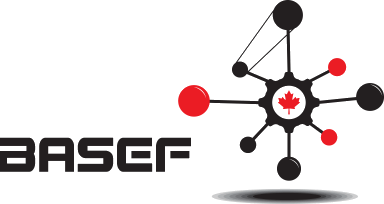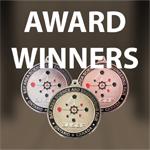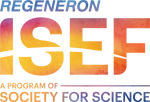What does a project display backboard look like?
You can be creative, so long as you don’t break any of the safety rules. But most project displays have a three-panel backboard, a binder full of notes/plans/results, and maybe some props. See the BASEF Results Gallery for photos of some project displays.
Don’t forget your paperwork!
Make sure you have all the required documents:
- an Abstract for your project – a one-page summary of your project description, procedure, and conclusions.
- a Report including the Introduction/background and purpose; hypothesis/research question; materials and methods; data and results; conclusions/analysis; acknowledgements; references.
- a Project Notebook/Diary covering your initial brainstorming on problems/questions to explore, planning, a record of how/when the work was done, a record of data collected, and any obstacles and problems encountered
These documents are worth 20% of your score!
Make sure that all required information
will be available for Judging!
BASEF cannot guarantee that internet or cell phone access will be available!
Project Display Safety Rules
This list of rules may seem long, but the rules are fairly straightforward. Please look through them in order to avoid unpleasant surprises such as having your project rejected or elements of your display disallowed. The rules are meant to make the science fair safe for everyone, fair to participants, and to keep projects in line with current standards of ethics in scientific research.
Structural & Mechanical Safety
Microorganism Safety & Biohazards
Display of Animals and Animal Parts
Canada-Wide and International Rules
Project Dimensions
All exhibits, including all accessories, must be confined to a table or floor space not to exceed 0.8 metres, front to back; 1.2 metres side to side; and 2.5 metres maximum height from the floor. All measurements will be made from the outermost points, including framework and appendages, and will be checked by the safety and ethics committee. Fair supplied tables will not exceed 91 cm in height.
Exhibits exceeding these dimensions must be modified or will not be accepted.
General Safety
Safety of the public is a prime consideration. Suitable precautions must be taken to prevent the possibility of personal injury, property damage, and the legal action that could result from a lack of concern for safety.
- All sharp edges or corners on prisms, mirrors, enclosures, and glass and metal plates must be removed or otherwise protected. The length of hoses or extension cords is to be kept to a minimum and out of the way to eliminate tripping hazards. Use tape for securing.
- Aisles and exits must not be obstructed.
- Moving exhibits (e.g., radio-controlled vehicles, robots) should be restricted to the regulation display space. The committee will endeavour to provide an area to safely demonstrate to judges, for projects that require more space than the regulated exhibit display space. Powered aircraft may not be activated.
- Exhibits must be sturdy and self-supporting; adjacent walls may not be used for support. Moving parts must be firmly attached and approved for safety.
- Glue all paper flat to the backboard, or tape all edges. Do not hang overlapping sheets on the backboard; put them in a binder.
- No plants, plant tissues, fruits, vegetables, leaves, soils, or materials which could decompose are permitted. Food that may decay or may be subject to allergy concerns is not permitted. These items can all be replaced with a photograph.
- We have been notified by the College that electrical power in the gym we are using is very limited. Therefore we may be asking students to not use display lighting on their projects, to ensure equipment needed for project demonstrations isn’t affected by tripped circuit breakers. We will assess this in detail at project setup, and let you know.
- One electrical outlet will be supplied if requested. Each circuit will be shared by several projects. Exhibitors should bring their own good quality (CSA approved) 3 prong extension cord, since outlets may not be adjacent to each project’s display space.
- Switches and cords must be the approved variety. Cell or battery-fed circuits should be safe in design and operation.
- No gas or water outlets will be available.
- No cable or telephone circuits will be available.
- Use unbreakable, sealed containers for any materials we allow you to display at your project.
- The exhibitor must supply all equipment except display tables.
- The exhibit must comply with all safety and ethical regulations as outlined below, and in the Safety and Regulation Checklist.
Fire Safety
The organizing committee will work with the Safety Officer of the host site to meet all requirements for safety and security, and to communicate those requirements as necessary to participants during the science fair. The organizing committee will establish an exhibit hall layout that satisfies the host site’s requirements for fire safety and emergency evacuation purposes. Certain restrictions have been defined for the construction of displays to reduce the possibility of accidental fire during the fair, and in the event of fire, to allow for safe evacuation of the building. The committee will be responsible for ensuring that fire extinguishers of proper size and rating are available in the exhibition area. The committee will establish a fire evacuation plan, and an exhibit hall layout that minimizes long rows in order to reduce flame spread. All apparatus used to generate heat (hot plates, heat lamps, torches, candles, etc.), if displayed, must be rendered non-operable. Packing material must not be stored in the exhibit hall.
Chemical Safety
- No gels, liquids, or pastes of any kind are permitted in the project display area. Empty, labeled, unbreakable containers can be used to simulate these materials if required.
- No containers of toxic or flammable chemicals are allowed.
- Dangerous chemicals are not allowed – this includes prescription drugs, over-the-counter medication, kitchen and laundry supplies, tobacco products and by-products.
- Substitutes for toxic and corrosive chemicals must be used. Common salt, for example, can be used to simulate chemicals such as ammonium nitrate. Water may be used instead of alcohol, ether, and other highly flammable liquids. Molasses can be used to represent petroleum products.
- When chemicals are simulated, they should be labeled with the names of the substance they represent preceded by the word ‘simulated’; Photographs may also be used.
- No project will be penalized because the key (but potentially dangerous) components were not on display. If you are in doubt about any material, then use a substitute in your project display.
Electrical Safety
- As low a voltage as possible must be used.
- At the end of the day or the viewing period, all electrical exhibits must be disconnected, and power bars switched off.
- Only CSA-approved extension cords in good repair shall be used.
- Where practical and necessary, it is recommended that activity lights be used to indicate that the voltage is on.
- Cord-connected electrical appliances shall be CSA-approved.
- An insulating grommet is required at the point where the service enters any enclosure.
- Electrical devices must be protectively enclosed as far as it is practical.
- Any enclosure must be non-combustible. All non-current carrying metal parts must be grounded.
- All lighting used for decoration or illumination must be CSA approved. Lamp wattage must not exceed ratings. Lighting must not pose risk of injury if touched.
- No exposed live parts over 36 volts are allowed. Current (amperage) must be low so as not to cause any discomfort or danger if touched.
- Wet cells shall not be used because of the hazardous chemicals involved.
Structural & Mechanical Safety
Exhibits must be of a safe design with adequate stability to keep from tipping. Dangerous moving parts such as belts, gears, pulleys and propeller blades must be suitably guarded. Pressurized vessels should have a safety valve. Compressed gas cylinders are not allowed to be displayed. Small (table top) air or other fluid compressors may be displayed, but must be rendered inoperable for the duration of the fair. Associated pressure systems must be purged of any contents other than ordinary air, and must be open to the atmosphere, to ensure they are at room pressure. Pressure systems of any type are considered hazardous equipment. You must complete a Designated Supervisor form and it must be submitted with the project registration. You can find links to the forms on the Forms pages for your age group (junior or intermediate/senior).
Microorganism Safety & Biohazards
The following hazardous biological materials may not be displayed:
- Radioisotopes or compounds containing radioisotopes at activities above normal background
- Biological toxins
- Microorganisms (the use of mixed cultures obtained from the environment – e.g. soils, mouth swabs – is acceptable for experimentation, but not for display)
- Cells or tissues can only be displayed in sealed, prepared slides, and must not be infected with animal or plant viruses
- No cultures are allowed for exhibition (photographs or simulated cultures may be used)
- No plants, plant tissue, or organic soil material shall be exhibited at the BASEF fair, although such materials may be used in experiments. The use of photos is encouraged for display purposes.
Display of Animals and Animal Parts
Students working on biological projects may involve animals as long as they adhere to all the applicable rules, policies and approvals. The display of the project is to be a report of completed work, and thus further restrictions are imposed. Live microorganisms and vertebrate or non-vertebrate animals shall not be included in the project display, although appropriate photographs may be used. The only parts of vertebrate animals that may be displayed are those that are either naturally shed by an animal or parts properly prepared and preserved. Soft tissue specimens are not acceptable if they are preserved in formaldehyde, a dangerous chemical excluded under the chemical safety sections of these guidelines. Sealed tissue samples on microscope slides are permissible. Thus, porcupine quills (safely contained), shed snake skin, feathers, tanned pelts and hides, antlers, hair samples, skeletons and skeletal parts are permissible, while organ and tissue samples are not. However, photos, videos or slides of organ and tissue samples may be made available for viewing. Gratuitous, sensational or macabre images are not permitted on display.
Display of Previous Awards
Awards, certificates, prizes etc. won by you or your project at previous science fairs or competitions are not to be displayed or discussed at the BASEF on Judging day. We are pleased that you have done well, but do not want to bias our judging process. You may display previous awards only at the Public Viewing on Saturday.
BASEF Safety Inspection Checklist
This checklist is to be used as a guideline for you during the development of your project display. On Setup Day, a BASEF Safety Inspector will use this form to complete a safety check on the project you have setup.
Safety Inspection Checklist.
Canada-Wide and International Rules
Projects that win trip awards to the Canada-Wide Science Fair and International Science and Engineering Fair will be subject to different rules that may be more or less restrictive, and may require students to modify their backboards or backboard materials. See the CWSF Project Display Policy and the ISEF Project Display Regulations for more details.




